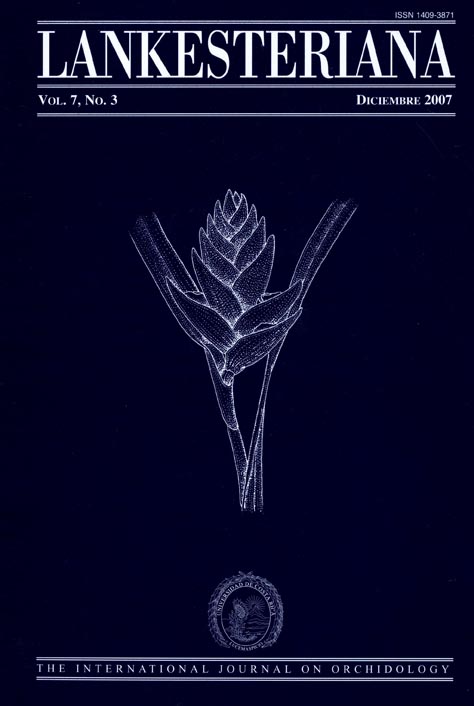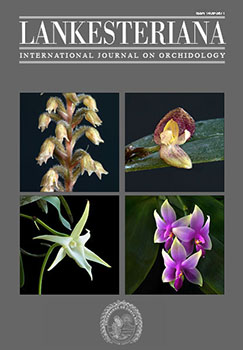Genetic relationships of Phragmipedium species (Orchidacea)using amplified fragment lenght polymorphism (AFLP) analysis
DOI:
https://doi.org/10.15517/lank.v0i0.7931Palabras clave:
Orchidaceae, marcadores de ADN, Phragmipedium, Phragmipedium kovachii, AFLP, huellas digitales, DNA markers, FingerprintingResumen
The objective of this study is to evaluate the genetic relationships of eight Peruvian species of the genus Phragmipedium using amplified fragment length polymorphisms and a phenetic analysis (UPGMA). The analysis showed that the species are phenetically grouped in four large clusters. The first cluster includes species from the Himantopetalum (P. pearcei and P. richteri) and Lorifolia (P. boissierianum) sections. The second cluster comprised the species of the Micropetalum section (P. besseae and P. schlimii). The third one included P. kovachii in the Schluckebieria section. The fourth cluster contains species of the Phragmipedium (P. caudatum and P. wallisii) section. The results show that AFLP analysis is a powerful genetic tool for the analysis of the taxonomy of orchids from the diverse and complex Phragmipedium genus.Descargas
Los datos de descargas todavía no están disponibles.
Descargas
Publicado
2007-11-01
Cómo citar
Rodríguez Salas, M., Benavides Rainilla, J., & R. Espinoza, J. (2007). Genetic relationships of Phragmipedium species (Orchidacea)using amplified fragment lenght polymorphism (AFLP) analysis. Lankesteriana: International Journal on Orchidology, 7(3). https://doi.org/10.15517/lank.v0i0.7931
Número
Sección
Artículos
Licencia
Conforme con las Políticas de Acceso Abierto promovidas por la Universidad de Costa Rica, los derechos de autor de todos los artículos publicados en Lankesteriana se encuentran bajo una licencia Creative Commons y pueden ser descargados gratuitamente. Los derechos de autor y de publicación pertenecen a la revista bajo la licencia CC BY-NC-ND 3.0 CR.
Before the publication of the materials submitted by the author(s) in LANKESTERIANA, the author(s) hereby assign all rights in the article to the Lankester Botanical Garden.





